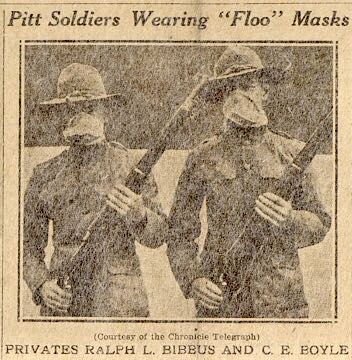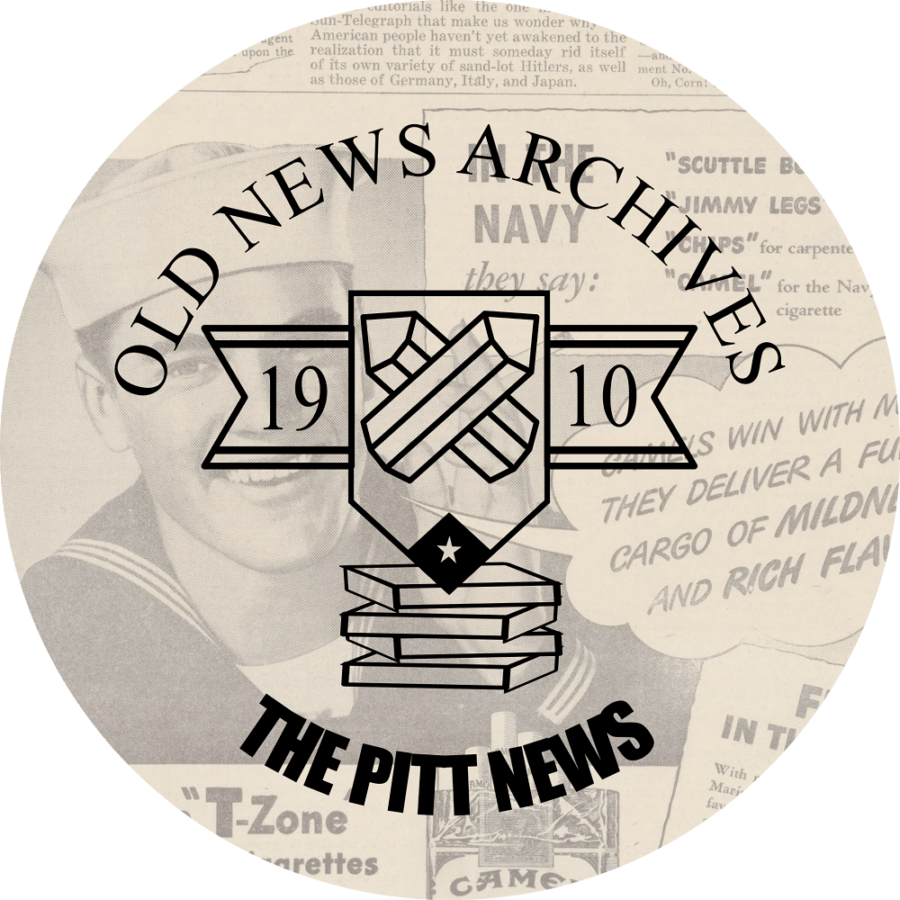Old News: 1918 and the first great Pitt quarantine
Old News is a blog dragging up ancient Pitt history. Here, we’ll retell some of the weird, interesting or relevant stories we find in The Pitt News’s archives at Documenting Pitt.
“Conditions at the University of Pittsburgh are not so alarming as the announcement of the quarantine might seem to indicate,” Lt. Col. Silas Wolf said.
And they weren’t, yet. Quarantine came to Pitt in 1918. Although it’s not certain where the flu epidemic of that year originated, the common term “Spanish influenza” is almost certainly inaccurate — the flu probably came from China, the United Kingdom or somewhere in the United States. In any case, large numbers of cases began to appear in Europe early in 1918 and quickly spread to the United States via members of the military. It reached Pitt, where thousands of students were preparing to ship off to fight in World War I, sometime in October.
While the current coronavirus pandemic sweeping the world calls to mind the Spanish influenza — the most devastating pandemic the United States has experienced since it became a country — there are clear differences, and it’s important not to link the two too closely. Notably, most young people aren’t put directly at risk of death by COVID-19, which is deadliest to the elderly and groups with pre-existing conditions. The 1918 flu, however, was devastating to young people, with more than half of deaths striking people between the age of 20 and 40. College students were much more likely to watch friends their age die.
Edwin Kiester Jr., a writer and historian who passed away in 2015, wrote an excellent article about the pandemic for the January 2003 issue of Pitt Med magazine, placing Pitt’s outbreak in the context of the statewide and national instances. Only weeks after 3,500 male Pitt students of conscription age were drafted into the army to fight in the first World War, Kiester writes, the campus was quarantined under orders from the state:
“Guards at Bigelow Boulevard and Fifth Avenue prevented anyone from entering or leaving. The football schedule was canceled — in a year when Pitt again expected to be national champions under Pop Warner — along with all other gatherings, indoors and out. The medical school, like the rest of the University, suspended classes. Sixty-three juniors and seniors performed emergency intern duty at hospitals. And the students who were presumably healthy in September were now coughing, wheezing, doubling over in pain, shivering with fever, dropping where they stood — and dying … Before it had fully subsided, more than 23,000 men, women, and children had been sickened in Pittsburgh, and about 5,000 had died. During the worst days, one Pittsburgher fell ill every 70 seconds, and someone died every 10 minutes.”
A look at period issues from The Pitt News — then The Pitt Weekly — shows how quickly the flu became an overwhelming threat on campus. The first issue of the year was published on Oct. 2, 1918. Headline: “Over 3,500 Men Inducted Into S.A.T.C,” the Student Army’s Training Corps. The words “flu” and “influenza” don’t appear anywhere in the paper. But the next issue, published a week later, was headlined “Quarantine Stops University Work, S.A.T.C. in Zone.”
Starting Oct. 3, nonmilitary students had been ordered to stop coming to class, and female students were given a vacation. Like the current quarantine measures instituted across Allegheny County, Pennsylvania and the country, the quarantine on Pitt was a preventative measure, intended to protect the 1,250 SATC students who had been inducted so far.
“Colonel Wolf issued orders that each student might cough, sneeze or expectorate if he must, but advised him to cover his face with a handkerchief to prevent the spread of the disease,” The Pitt Weekly wrote.

Much like COVID-19 has all but taken over TPN’s currently all-digital publication, the influenza quarantine became the biggest story in each week’s paper. “Quarantine Still On.” “End of Quarantine Undetermined, Conditions Better.” Even as it appeared that conditions were growing safer on campus and in the City for servicemen and the rest of the Pitt community, the army medical authorities who had instituted the quarantine held off on giving the OK for classes to start back up again.
It’s hard to tell, reading these articles now, what the situation really was within the SATC at the time. Although the officials quoted said the measures were preventative, Kiester’s article describes a devastating epidemic in Pitt’s SATC, overwhelming the University infirmary and necessitating the use of several local hospitals. And although death totals aren’t available for individual universities, many of those hospitalized were dying.
It was mid-November when the army was satisfied that the situation was under control. Classes reopened, and female students came back to Pitt after a five-week absence. After the quarantine had been lifted, but before classes once again began, the surviving Pitt SATC members were organized into a parade in the streets. The most suffocating effects of the epidemic had lifted, and regularly scheduled programming could continue. The most pressing concern of the University and its student paper was once again World War I — not an epidemic ravaging the student soldiers who were supposed to fight in it.
Emily Wolfe is the digital manager at The Pitt News. An Ashburn, Virginia native, Emily plans to graduate in 2022 with majors in fiction writing, French...







